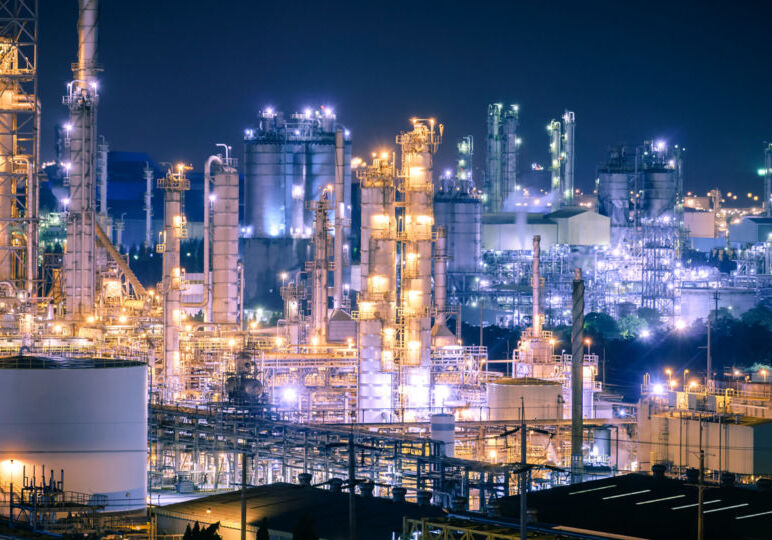The petrochemical presence. How the shift to petrochemicals is reshaping the downstream industry

Petrochemicals are part of everything we do. They’re in the plastic that packages our food, the fertilizer that boosts our crops, the detergent that cleans our clothes. Described by Dr Fatih Birol, Executive Director, of the International Energy Agency as “one of the key blind spots in the global energy debate”, they have been building their presence in the background, driving influence over economies, and future energy trends.
As well as shaping the future, petrochemicals are giving a boost to the old kids on the block. Consumption of petrochemical products will account for over a third of the growth in oil demand to 2030, and nearly half to 2050.
The COVID-19 pandemic has further fuelled the petrochemical craze, as disposable packaging and cleaning products drive demand. As Jonatas Melo, Senior Vice President, Asia South, Borouge shared with Asian Downstream Insights recently, “When we go to the supermarket, we are all buying many more chemicals for cleaning. [It is] peak consumption of packaging…[these] specific verticals will have much more demand”.
The next phase of the energy transition seems powered – and packaged – by petrochemicals. But as regional markets develop, and renewables’ ratings rise, it is also a market at a critical crossroad.
Spotlight on Asia
Not all regions are embracing the petrochemical transition at the same pace. In Europe, the rise of ESG and the growing investor focus on sustainability means that many operators may shift their focus to renewables. In Asia however the market is bullish, and seems only set to grow, driven by the force of plastic consumption.
China is trailblazing, with plans to add another 1.6 million bpd capacity to its petrochemical refineries over the next years. This is expected to set the trend for a series of east Asian “mega-refiners”, that will set new market standards with their capacity to produce petrochemicals products at high volume and low cost.
In South Asia, India’s Reliance Industries has doubled petrochemical capacity in just a few years. They’re a sign of a wider continental shift: in the next seven years, over 50% of new global refining capacity for petrochemicals will be in Asia.
Since the 2008 crisis, Asia has emerged as a poster child for petrochemicals, capitalizing on favourable economic and demographic trends. Now, the rest of the world is catching up. A growing consumer preference towards lighter feedstocks has given North American and Middle Eastern operators a competitive edge. Unreliable crude pricing and volatile feedstock supply are bringing new risks and challenges. Asia may be leading the petrochemical race, but in an era of uncertainty, no region can afford to be complacent.
Petrochemical problems
It’s a crowded and competitive market, and renewables’ rising star could eclipse petrochemicals’ spotlight. With COVID-19 curbing transport fuel demand, some operators are questioning the ROI of investing in petrochemicals projects.
“Decisions have been fast-tracked by the pandemic”, explains Michael Connolly, Senior Consultant within the ICIS global refining team. “[It] has shown how quickly demand can be reduced”. He has seen COVID-19 work as a barrier, “hindering some refiners from making that final decision to transition from traditional oil products to petrochemicals” , and notes that during the peak of the global health pandemic, he saw numerous cancellations and delays to petrochemicals projects.
Solutions for sustainability
To ensure an effective and sustainable petrochemicals transition, there needs to be an increased awareness and commitment to align petrochemical production to greater sustainability goals.
Downstream senior management should ensure that there is direct investment into sustainable petrochemical R&D. Clear benchmarking and metrics should be established to prove not only the commercial, but the environmental ROI of the petrochemical process.
In a market where change is driven by consumer demand, efforts should also be made to raise awareness about recyclability of plastics, and products should be designed with disposability in mind.
Keeping petrochemicals clean is not just a short-term strategy to compete with the vogue for renewables. ESG across all sectors is a rising concern, and with increasing scrutiny from stakeholders, consumers and governments, it’s the petrochemical leaders implementing sustainable strategies who will be able to sustain their business.
Fuelling hope for fossil fuels
Over the next decade, the global petrochemicals market is projected to reach a value of US $676.5 billion. With nearly 99% of plastic production using oil and gas, this growing market could be fossil fuels’ greatest hope.
But petrochemicals are no panacea. And operators making the shift should be sure that their petrochemicals transition evolves with the needs and trends of this wider industry landscape.
Read more:
- Aramco to Acquire 50% Stake in Air Products Qudra’s Blue Hydrogen Industrial Gases Company
- SK Innovation and SK E&S Announce Merger, Forming Asia-Pacific’s Largest Private Energy Company With Assets of KRW 100 Trillion
- Indorama Ventures Secures $200 Million Loan From IFC to Drive Sustainability Program
- Aramco’s Strategic Gas Expansion Progresses With $25bn Contract Awards
- GC CEO Narongsak Jivakanun Reveals Vision to Continue 3 Steps Plus Strategy and Drive Map Ta Phut to Become Southeast Asia Hub